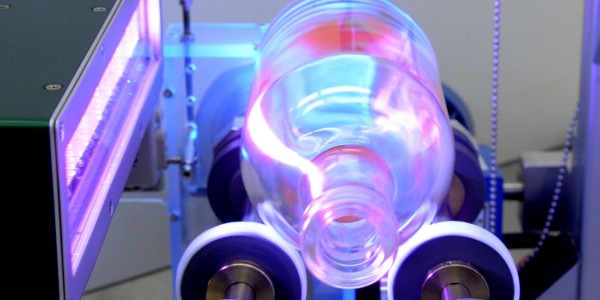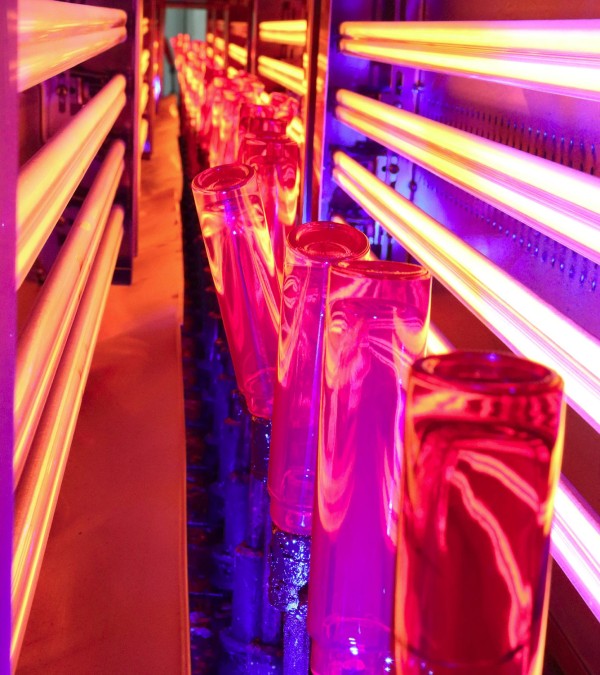Glass and Ceramics

UV Lamps for Glass Drying and Curing
Glass and ceramic decorators using UV curing gain the advantages enjoyed by plastic decorators: the ability to directly print multiple colors in any color at high speed, free of heavy metals, and using fast, easy, low-cost curing.
UV-curable inks are commonly used to decorate and mark a variety of glass products, including beverage bottles, beverageware, mirrors and flat glass, packaging for cosmetics, fragrances and personal care products.
Regulations restricting the use of inorganic inks containing heavy metals (EU Packaging Directive 94/62/EC) and rising energy costs have increased the use of UV curing in glass decoration.

Infrared heating lamps for glass coating and drying
Glass is printed, coated, adhesive treated. Mirrors, bottles, ampoules or car screens are made of glass.
Infrared systems or UV technology optimize the necessary processes:
-Drying and curing of coatings, printing and inks
- Tempering of glass tubes, glassware or ampoules
- Preheating of laminated glass before cutting
Infrared radiation penetrates the material and dries the coating from the inside out.
The result is a good surface quality.
This saves time, space and energy compared to drying with hot air. Especially in energy-intensive processes for drying paint or inks or printing on glass, Priest infrared ovens can be advantageous. A unique combination of infrared radiation, reflection and convection helps to speed up the drying process and save energy.
Advantages of infrared heating:
non-contact heat transfer
high efficiency
Adjusting wavelength to match absorption of glass helps improve process
Short response time for good control and regulation
Advantages of UV curing
Improve productivity
Environmentally friendly - contains no solvents or heavy metals and saves energy
Improved print definition
Color matching is easier
Adds durability to meet glass decoration requirements such as adhesion and chemical resistance
Easier to recycle as UV inks burn off during recycling
Advantages of Infrared
MWIR heating works best on glass Absorbing gold reflectors on the emitter direct heat precisely to the part of the product to be heated
Infrared emitters precisely matched to materials and processes
High heat transfer capacity and contactless heat transfer for high efficiency
Efficient energy transfer due to optimal wavelength
Concentrated energy input due to adaptation to the shape of the product
Provides energy only when needed due to fast reaction time
Application
decorate:
·Drink bottle
·Food container
·wine set
·Mirror
· Packaging of perfume, nail polish, personal care products
·plate glass
mark:
· Scientific laboratory utensils and instruments such as beakers and test tubes
·Consumer products such as liquid measuring cups
